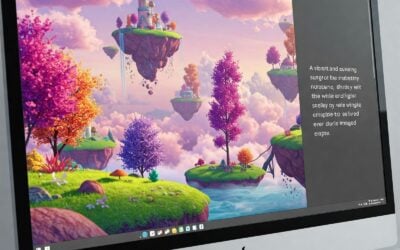In a world overflowing with information, the key to effective learning often lies in embracing diversity—diversity not just in content, but in the way we consume and process it. Multimodal learning, the integration of text, visuals, and media, is a powerful approach that taps into different learning styles, enhancing comprehension and retention.
The Power of Words
Text remains a fundamental building block of learning. It provides the foundation for understanding concepts, theories, and narratives. However, relying solely on text can limit the accessibility of information to certain individuals whose learning preferences lean towards visual or auditory methods.
A Picture is Worth a Thousand Words
Visual elements add a layer of richness to learning experiences. Complex ideas can be simplified through diagrams, charts, and infographics, making them more digestible. Visuals not only aid in understanding, but they also enhance memory recall. Think about it—how often do you remember an image compared to a paragraph of text?
Bringing Concepts to Life
Media, such as videos and interactive simulations, takes learning to a whole new dimension. It engages multiple senses, creating a dynamic and immersive experience. Watching a video demonstration or participating in a virtual experiment can significantly deepen comprehension and make learning more enjoyable.
Catering to Diverse Learning Styles
People have varied learning preferences. Some people are visual learners, thriving on images and graphics. Others are auditory learners, absorbing information through lectures or podcasts. Kinesthetic learners benefit from hands-on experiences. By integrating text, visuals, and media, multimodal learning accommodates these diverse styles, ensuring that everyone can grasp and internalize information effectively.
Boosting Engagement and Retention
The combination of text, visuals, and media not only caters to different learning styles but also enhances engagement. A well-designed infographic or an interactive simulation can capture and maintain attention better than a dense block of text. Increased engagement leads to improved retention, as learners are more likely to remember information that has resonated with them on multiple levels.
Real-World Applications
In the professional world, effective communication often involves a mix of text, visuals, and media. Whether creating a presentation, designing a report, or collaborating on a project, the ability to convey information through various modes is a valuable skill. Multimodal learning prepares individuals for the demands of a modern, interconnected society.
Embrace the Future of Learning
As we navigate an era dominated by digital content and rapid information dissemination, embracing multimodal learning is not just beneficial; it’s essential. The fusion of text, visuals, and media creates a holistic learning environment that nurtures curiosity, fosters understanding, and prepares individuals for the challenges of a knowledge-driven world.
Multimodal learning is a gateway to a more inclusive, engaging, and effective educational experience—one that recognizes and celebrates the diversity of human cognition. So, let’s unlock the full potential of learning by embracing the synergy of text, visuals, and media!




